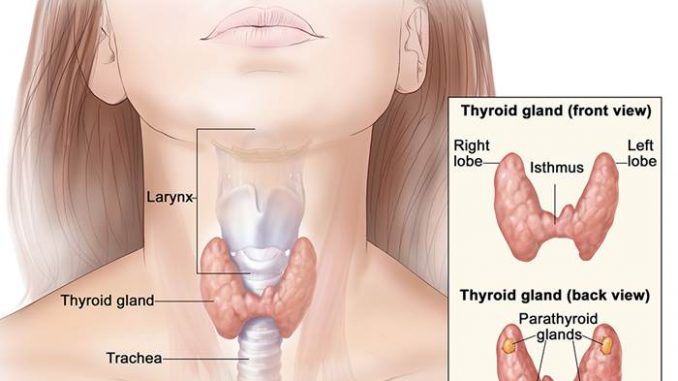
With the current hectic and fast pace of life, time literally flies. We will only realise what we missed in life when we step back and reflect, retire or encounter certain health issues like cancer.
For those suffering from cancer, being alive and well is a reason to celebrate.
In order to create awareness and celebrate living, cancer survivors and various non-profit organisations around the world have recognised certain months for specific cancers.
For thyroid cancer, it is the month of September.
Thyroid cancer is the ninth commonest cancer involving women in Malaysia (statistics from 2007 to 2011).
In comparison, thyroid cancer is the fifth commonest cancer amongst women in the United States and the commonest cancer in South Korea regardless of gender.
Though the rise in the incidence of thyroid cancer has frequently been attributed to “over-diagnosis” due to the use of better imaging equipment and health screenings, it has been shown that there has been indeed a true increase in the occurrence of thyroid cancer in the US.
In fact, there was a 3% increase per year in thyroid cancer diagnoses from 1974 to 2013.
So, what is the hype about thyroid cancer?
The majority of thyroid cancers (more than 90%) are differentiated thyroid cancers with good prognosis if detected and treated early.
In fact, even treated stage 4 well-differentiated thyroid cancer patients have a 10 year disease-specific survival (DSS) of 50%, meaning that 50% of patients with stage 4 disease are still alive at 10 years.
Such an outcome is rarely seen in other types of cancers.
Thyroid cancers can be divided into differentiated and undifferentiated cancers.
Differentiated thyroid cancers comprise of papillary thyroid cancer (the majority) and follicular thyroid cancer.
These cancers are responsive to radioiodine-131 (I-131) therapy, which is the gold standard treatment after definitive surgery (total thyroidectomy with or without lymph node resection). The role of external beam radiation in these iodine-avid cancers is limited.
Undifferentiated thyroid cancers consist of anaplastic and medullary thyroid cancers.
Anaplastic thyroid cancers have very poor prognosis and patients frequently present at very advanced stages with only 26% of patients surviving after two years.
On the other hand, medullary thyroid cancer has relatively good prognosis with a 10-year survival rate of 75%-85%.
Early stage medullary thyroid cancer res-ponds well to definitive surgical intervention.
The large majority of patients with thyroid cancer frequently have no symptoms and the underlying cancer is often discovered during investigations for other ailments or health screenings.
Many thyroid cancer patients actually recall having lumps in their necks for years, but did not seek any medical attention.
Fortunately in most cases, differentiated thyroid cancers are slow-growing, and thus, offset the delay in seeking medical attention.
Some patients may present with difficulty swallowing or hoarseness of voice.
Others may present with hyperactive thyroid glands causing them to have palpitations, fine tremors, heat intolerance and mood disorders, or even present with lumps elsewhere in their body.
It is important to seek medical attention upon the discovery of any neck lump.
Although on most occasions the lump may be benign, it still needs to be investigated. This is needed to exclude malignant tumours such as thyroid cancers, lymphoma or a metastatic neck node.
Screening for thyroid cancer is not recommended for patients without symptoms unless indicated, e.g. in patients with strong family history of thyroid cancers, history of neck irradiation or known genetic predisposition.
However, simple regular self-examination of the neck (similar concept to self-breast examination) can actually save lives.
Stand in front of the mirror and look at your neck – check for any lumps or asymmetry between the right and left side of the neck.
Then, use your fingertips to feel the neck for any lumps, one side at a time.
Although the results of this simple examination may not be definitive, it helps us to be mindful of our neck and reminds us to seek medical attention when necessary.
Any medically-trained doctor can confirm the neck lump that was seen or felt, and subsequently refer if necessary for further investigations.
All thyroid cancer patients will eventually be seen by surgeons, nuclear medicine physicians (for differentiated thyroid cancers) and oncologists (undifferentiated thyroid cancers).
In this day and age, overwork, stress, lack of sleep and unhealthy diet is the norm for most people. I am reminded of this quote from Thomas Fuller, a historian in the 17th century: “Health is not valued until sickness comes.”
We are responsible for our own health, so in conjunction with World Thyroid Cancer Awareness Month, do seek help for any neck lumps, big or small – do not procrastinate.
Most thyroid cancers are treatable with good, if not excellent, outcomes. Predictably, patients treated for early stage cancers fare much better than those treated at later stages!
Dr Alex Khoo Cheen Hoe is a consultant nuclear medicine physician based in Penang.
Source:-The Star

Leave a Reply